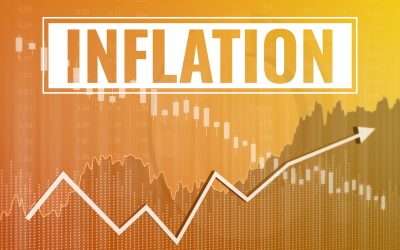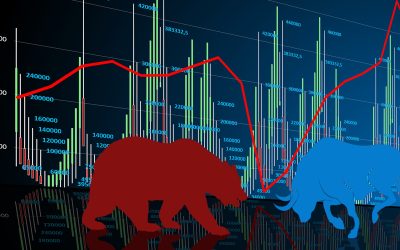
Starting out your investing journey, you may have been advised to follow the 60/40 allocation strategy. This strategy tells you to put 60% of your portfolio in equities and 40% in bonds or other fixed-income offerings. For decades, this strategy has been revered for its balance, offering high growth potential from stocks and a safety net in bonds.[1] The assumption was that stock and bond markets would not dip at the same time, mitigating risk and enabling long-term growth of investment accounts. However, the 2022 economy has brought the classic 60/40 allocation strategy into question as both the stock and bond markets dip at the same time.
- Yo-yo Stock Markets
Historically, stocks have thrived in environments of low-interest rates and low inflation. However, 2022 has seen the highest inflation rates in 40 years, prompting the Federal Reserve to increase interest rates six times in one year.[2] With high inflation, rising interest rates, and economic uncertainty, stocks have taken a knock in 2022, falling by nearly 23%.[3] Because stocks account for 60% of the 60/40 allocation, their drop has affected 60/40 portfolios, sinking their value. What worsens the matter is that equities are even more volatile than bonds; therefore, a minor shift in them greatly affects a 60/40 allocated investment account.[4] Even though the stock market may recover as the economy bounces back, the extent of recovery for these 60/40 portfolios is uncertain and may alter how you choose to spend or maintain investments in retirement.
- Sinking Bond Markets
Historically, bond values are set to rise (and the inverse yield falls) when recession hits and markets go down to spur investment back into the economy. But just like stocks, bonds have also risen in recent years in economic environments with lower inflation and declining interest rates. Already, bonds have not offered much promise to investors in the past few years, offering returns as low as 0.69% in 2016, and even negative yields in government bonds in 2018.[5] Just as this trajectory was turning around due to pandemic factors, high inflation and rising borrowing costs sent the bond market down by 14% in 2022, once again decreasing their value. In a 60/40 allocation, this negatively affects the whole portfolio. The intended safety net failed at providing the protection many anticipated, impacting when one can withdraw from their retirement funds and how to spend in a way that preserves money in the long term.
The economic uncertainty in 2022 has disrupted this classic allocation model, prompting many to rethink where and how they invest their hard-earned money. While various financial professionals have suggested new allocation strategies, many investors do not feel confident in putting their funds at risk. To find out what investment strategy works best for you and your retirement goals, talk to us today and get a personalized complimentary review of your finances.
[2] https://www.bankrate.com/banking/federal-reserve/how-much-will-fed-raise-rates-in-2022/
[3] https://www.cnbc.com/2022/10/03/why-60/40-portfolio-is-on-track-for-its-worst-year-ever-says-cio.html
[4] https://www.advisorperspectives.com/newsletters12/pdfs/Why_a_60-40_Portfolio_isnt_Diversified.pdf
[5] https://www.investopedia.com/articles/06/centuryofbonds.asp



